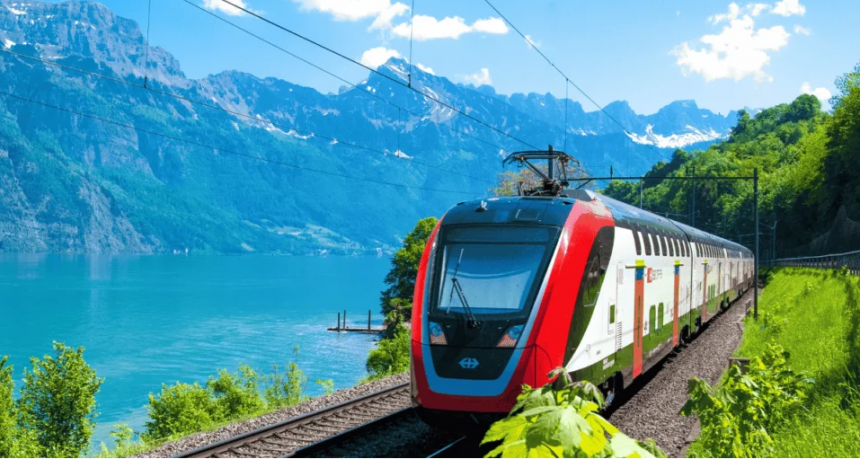The long-cherished dream of connecting Kashmir to the rest of India by rail has finally come true, with the railway link now being inaugurated. Traversing some of the world’s most challenging terrain and featuring the Chenab Bridge—the highest railway bridge in the world—India has accomplished a historic engineering and strategic milestone. What was once considered nearly impossible has been made possible—not just through technological prowess, but through sheer resolve, vision, and national will.
A National Vision Takes Shape
Though conceived decades ago, it was in 2002 that the Udhampur–Srinagar–Baramulla Rail Link (USBRL) project was declared a national priority. Recognizing its vast developmental, strategic, and emotional significance, the government committed itself to creating a transformative link between the Valley and the rest of the country.
Once fully operational, the USBRL will serve as a reliable, all-weather alternative to National Highway-44, which is frequently blocked by landslides and snowfall. This rail network is expected to change not just how people move—but how they live, trade, and connect.
The Chenab Bridge: A Global Feat
The crowning glory of the project is the Chenab Bridge in Reasi district, which stands at an awe-inspiring 359 meters above the riverbed—taller than the Eiffel Tower and recognized as the world’s highest railway bridge.
Built using over 28,000 metric tonnes of steel, the 1,315-meter-long bridge is designed to withstand extreme wind speeds and seismic activity. It features a massive steel arch—specially engineered to adapt to the region’s complex geology. From drones and cable cranes to real-time monitoring and precision engineering, the bridge reflects the pinnacle of civil engineering and perseverance.
Engineering through the Himalayas
Spanning 272 kilometers, the USBRL has pushed the boundaries of infrastructure development. The project includes:
- 38 tunnels, including the 11.2 km Pir Panjal Tunnel—India’s longest.
- 927 bridges.
- Routes cutting through the Shivalik, Pir Panjal, and Great Himalayan ranges.
Constructing in this terrain involved overcoming landslides, seismic risks, and sub-zero weather. Engineers employed the New Austrian Tunneling Method (NATM) and earthquake-resilient designs throughout the alignment. Safety features, including blast-proofing and anti-sabotage measures, were integrated into key sections.
A Strategic Lifeline
Beyond connectivity, this rail line is a strategic asset. Given Kashmir’s proximity to Pakistan and China, the railway ensures uninterrupted transport of military equipment and personnel—even during emergencies or road blockages. For India’s defense establishment, the line offers critical logistical depth and mobility—vital for national security on the northern frontier.
Economic Game-Changer
The rail link is expected to breathe new life into Kashmir’s economy. For years, transport bottlenecks limited market access and increased costs for:
- Apples and horticultural produce.
- Saffron, dry fruits and walnuts.
- Kashmiri handicrafts, carpets, and woolens.
Now, perishable goods can reach distant markets quickly, reducing losses. Tourism will also receive a major boost, with affordable and reliable rail access expected to attract more domestic and international travelers. Railway stations along the route are likely to evolve into economic hubs—generating jobs and promoting trade, logistics, and hospitality.
A Social and Emotional Bridge
More than anything, this project is about people. For many in Kashmir, the railway represents not just connectivity but inclusion—being part of the larger national journey.
Trains are egalitarian, connecting students, farmers, traders, and tourists alike. They make travel easier, education more accessible, and opportunity more attainable. The emotional integration that railways foster may, over time, help bridge long-standing distances—both real and perceived.
Environmental Sensitivity and Safety
The project team took great care to ensure environmental responsibility:
- Minimal deforestation and controlled blasting.
- Secure disposal of construction waste.
- Dust and noise control measures.
- Barriers to prevent landslides and rockfalls.
The Chenab Bridge is equipped with a state-of-the-art health monitoring system, capable of detecting vibrations, stress, and weather fluctuations in real time—ensuring long-term safety and resilience.
Overcoming the Odds
This success didn’t come easily. The project faced numerous delays:
- Difficult terrain forced repeated alignment changes.
- Harsh winters and tunnel collapses stalled progress.
- The 2004 tunnel accident in Pulwama raised safety concerns.
- Transporting materials and manpower into remote areas was a massive challenge.
The project also witnessed cost escalations, making it one of the most expensive infrastructure ventures in Indian Railways’ history. Yet the long-term social, strategic, and economic returns far outweigh the financial investment.
A Message to the World
The successful completion of this railway sends a powerful message. It demonstrates India’s ability to deliver world-class infrastructure in the most testing conditions—without compromising on quality or safety.
For the people of Kashmir, it is a symbol of inclusion and national commitment. For the youth, it promises opportunities that were once difficult to imagine. For the world, it is proof of India’s engineering excellence and its determination to connect every corner of the country.
Conclusion: More than Just Steel and Concrete
The train to Kashmir is not just a line on a map—it’s a symbol of hope. It represents resilience, unity, and the power of national ambition. In the thunder of trains rolling through the Pir Panjal and over the majestic Chenab, lies the sound of a region stepping into a new chapter.
When the first train whistles across the mountains, it won’t just be carrying passengers. It will carry trust, ambition, and the promise of a more connected and prosperous tomorrow. It will help facilitate smooth travel, boost tourism, trade, and business, and unlock new possibilities—ushering in a transformative era for the people of Jammu and Kashmir.
(The author is a freelancer, national TV debater, and columnist. He can be reached at: [email protected])








